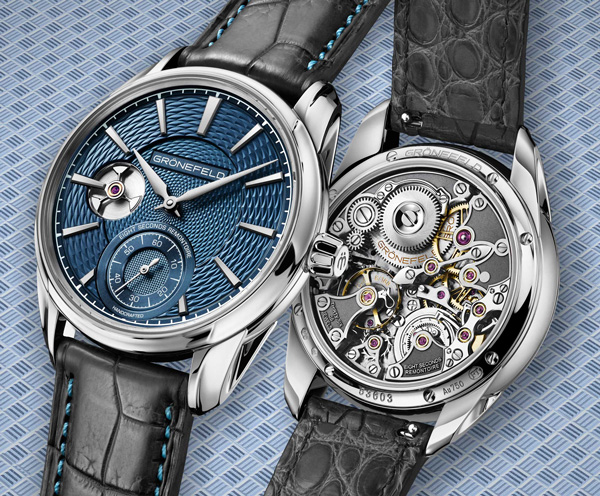
Oh my, this is a true horological feast for the eyes. A treat for any watchlover. A great collaboration between two of the highest talented watchmakers, the Grönefeld brothers and Kari Voutilainen.
News for the SIHH 2017
The Horological Brothers, Bart and Tim Grönefeld, are proud to present a collaboration with their friend, Kari Voutilainen. Kari is renowned for the creation of bespoke engine turned dials. Since the early 1990s, even before Voutilainen and Grönefeld created their own watch brands, a solid friendship had been established. The two watchmaking entities would often share booths at important watch fairs around the globe. Today, they are, once again, collaborating to meet the ever growing demand for personalised high-end, technical timepieces.
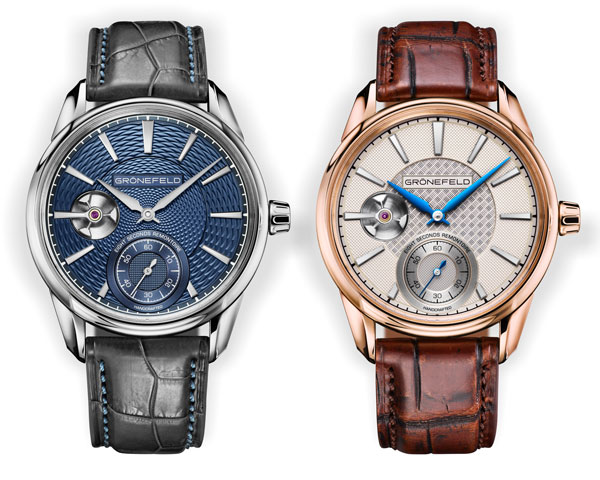
UNIQUE APPEARANCE: GUILLOCHE DIAL
Grönefeld is able to offer a vast choice of coloured and patterned dials. The dials are engine-turned, sometimes referred to as guilloché dials. This process confers each dial with its own unique appearance.
The words ‘engine turned’ might suggest that a computer-aided machine is used to make the patterns, but nothing is further from the truth. The dials are actually made on a century old machine. Every decorative line is made at very slow speed by deft hand and the skilful precision of a well-trained eye. It actually takes a few days of painstaking and patient effort to produce just one guilloché dial.
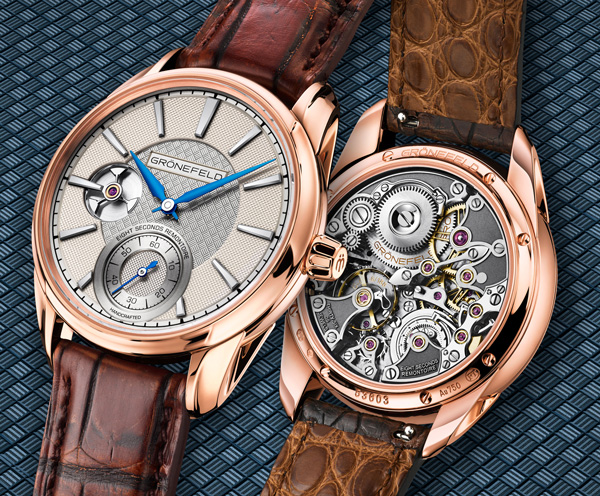
For those who have seen how the guillocheur (guillocheuse) is setting up the 100 or 200 years old guilloche device, they know that it takes several hours just to set up the machine for one guilloching step. It is a tedious and painstaking process, and one mistake means the end of the dial and they can start with a new dial again. The skill is not taught any more in any schools in Switzerland. This is something that can only be learned on the job. I found this out on my last visit of the atelier of Kari Voutilainen who showed me a lot of steps and details of the creation of a guilloche dial.
Actually, a lot of socalled guilloche dials you see nowadays are produced in an industrial process, and only very few watchmakers still do it the old fashioned way. The trained eye can see the difference right away between an industrial guilloche dial and a truly handmade one.
ENAMEL
To augment the allure of the engine-turned patterns, another even more exclusive technique can be applied, enamelling. The colourful and transparent enamel is applied to the dial surface to bestow a profound depth and lustre to the guilloché patterns.
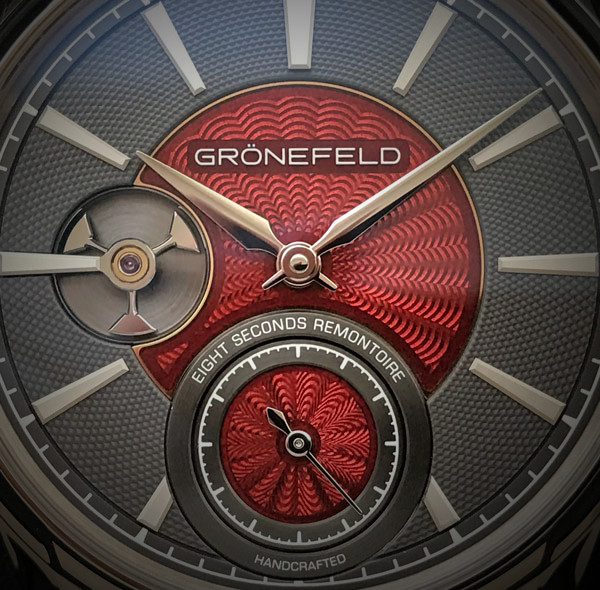
Because enamel is glass, not paint, it does not fade under ultraviolet light and will keep its lustre for years, decades or even centuries to come. Specialist Inès Hamaguchi is responsible for the delicate enamelling of the Grönefeld dials. To create the aesthetic effect desired, Inès actually mixes the basic ingredients for the enamel herself. She grinds glass and metal oxides to obtain these exceptional colours. The substrate melts by firing, usually between 750-850° C. The powder melts, flows, and then hardens to a smooth, durable vitreous coating on the engine turned pattern. After cooling, the surface gently needs to be ground down and polished to obtain a flat and translucent surface.
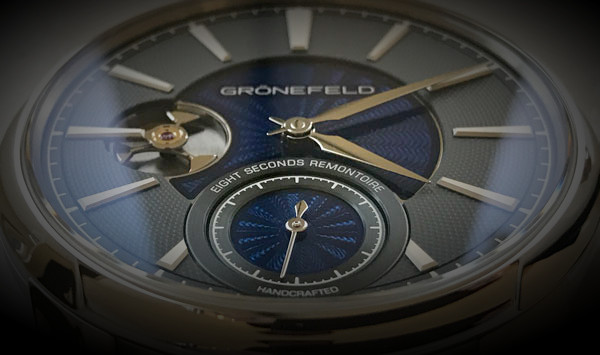
STAINLESS STEEL
Besides the existing versions in 18-carat red and white gold, the 1941 Remontoire is now also offered in stainless steel. Bart and Tim believe the 1941 Remontoire looks spectacular in a stainless steel case owing to the combination of the case material and the distinctively arranged, hand decorated, stainless steel bridges. For this case, the 316L stainless steel alloy has been specially treated to obtain a very fine molecular structure. This treatment results in a brighter colour and glossier finish than a non-treated stainless steel alloy. A maximum of 25 Remontoire watches in a stainless steel case will be made. These will be offered with the existing collection of dials as well as the new, bespoke engine turned and enamel dials.

